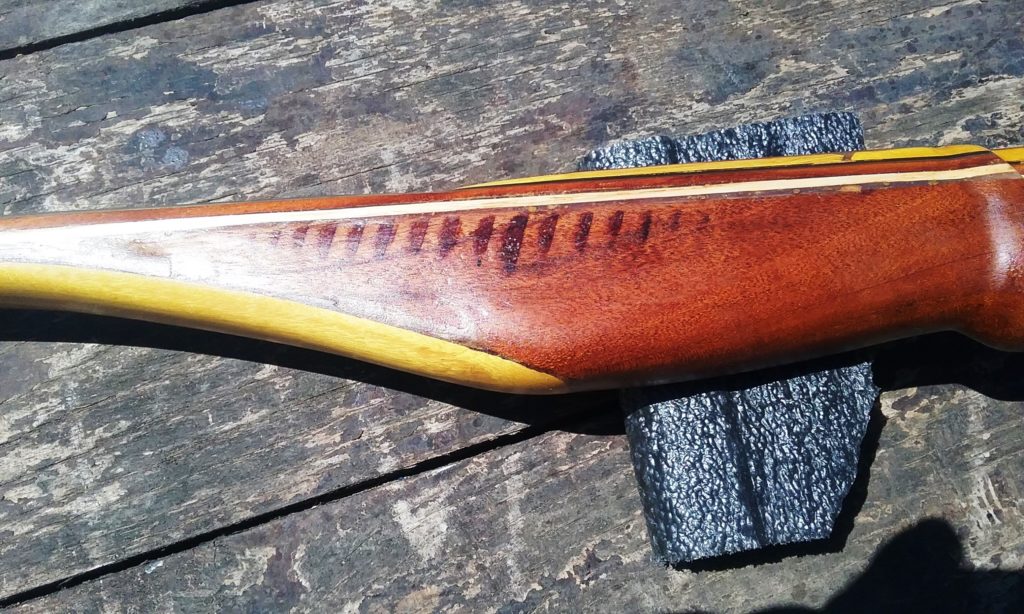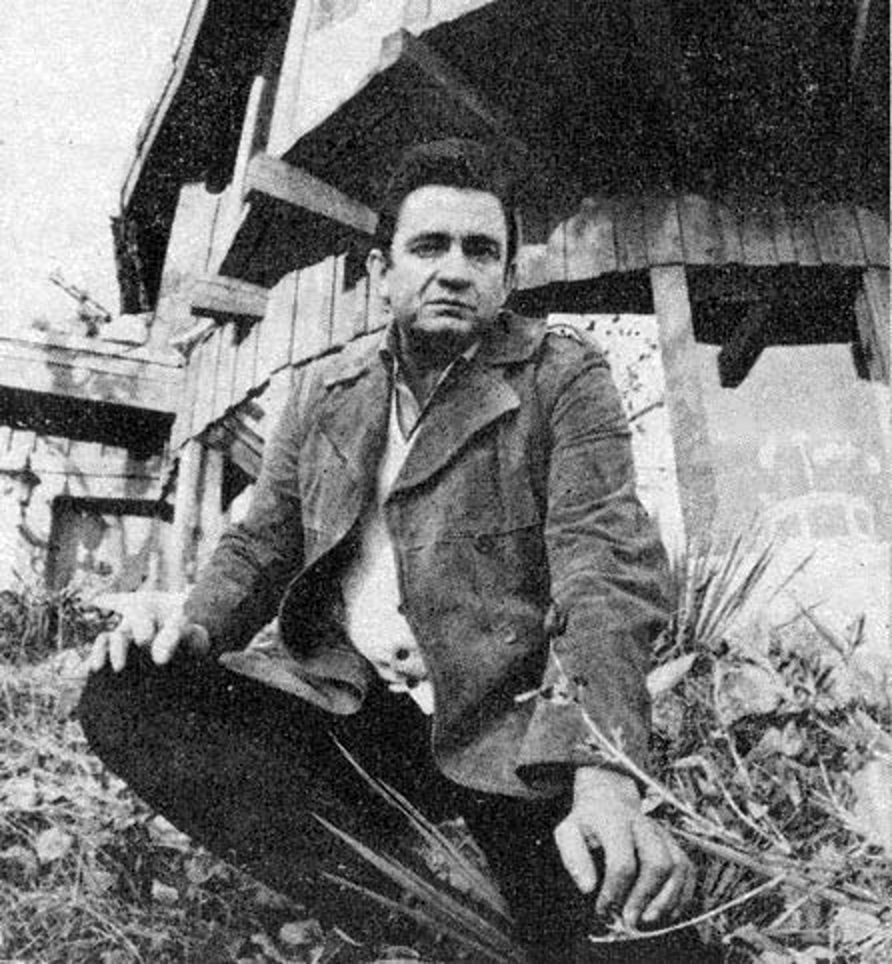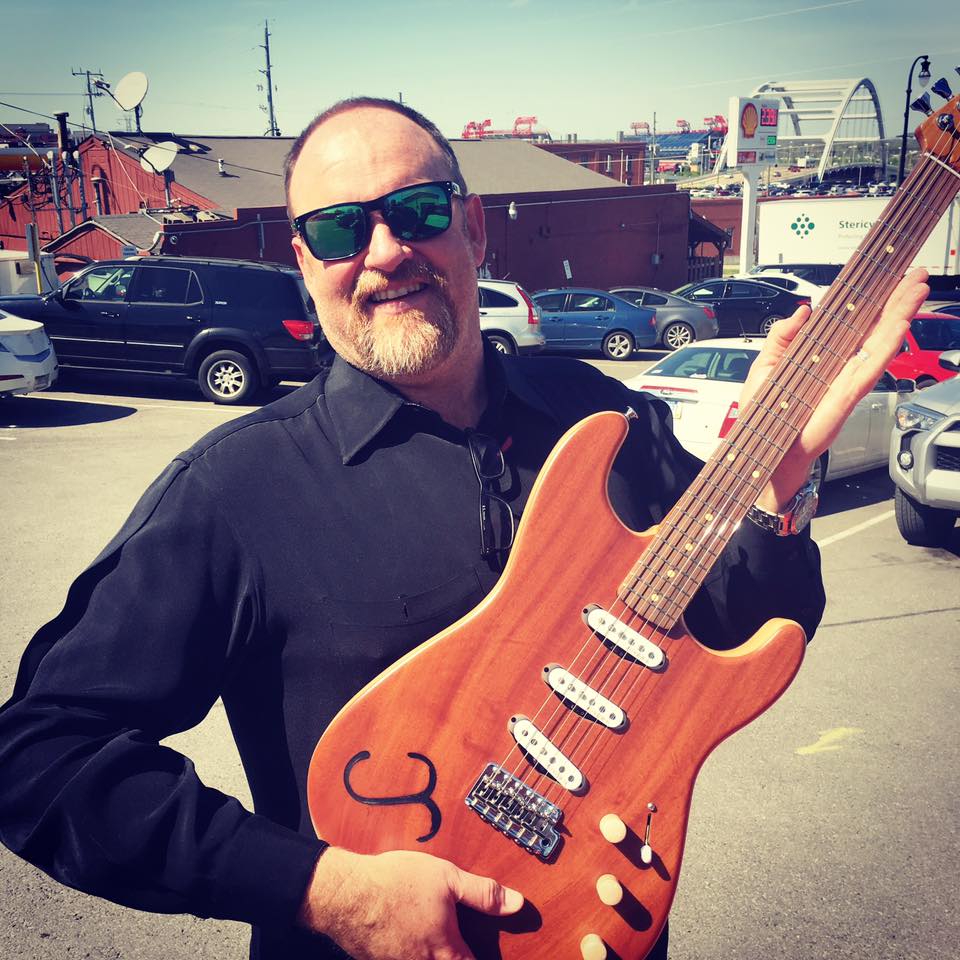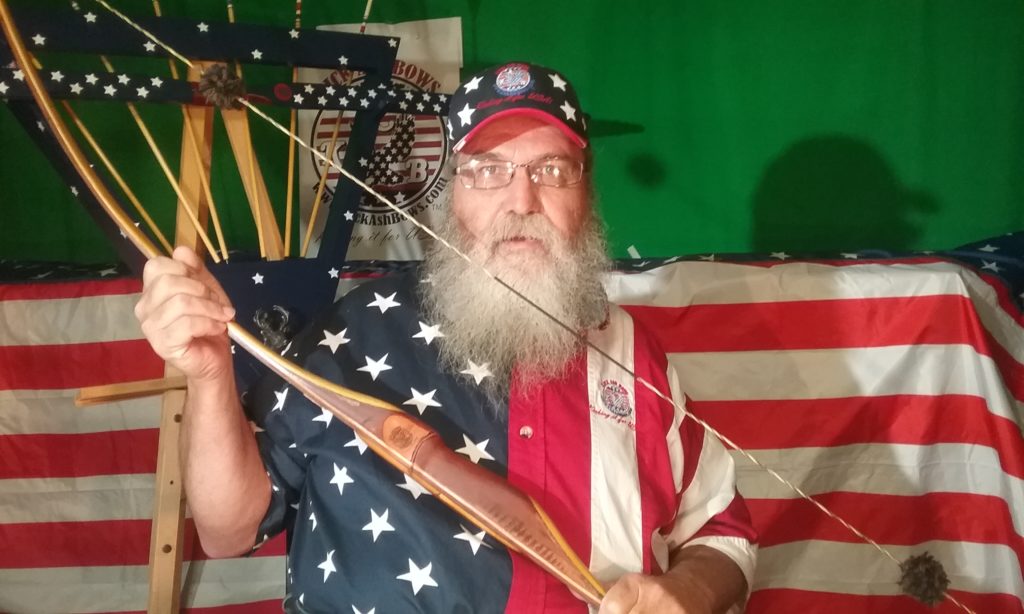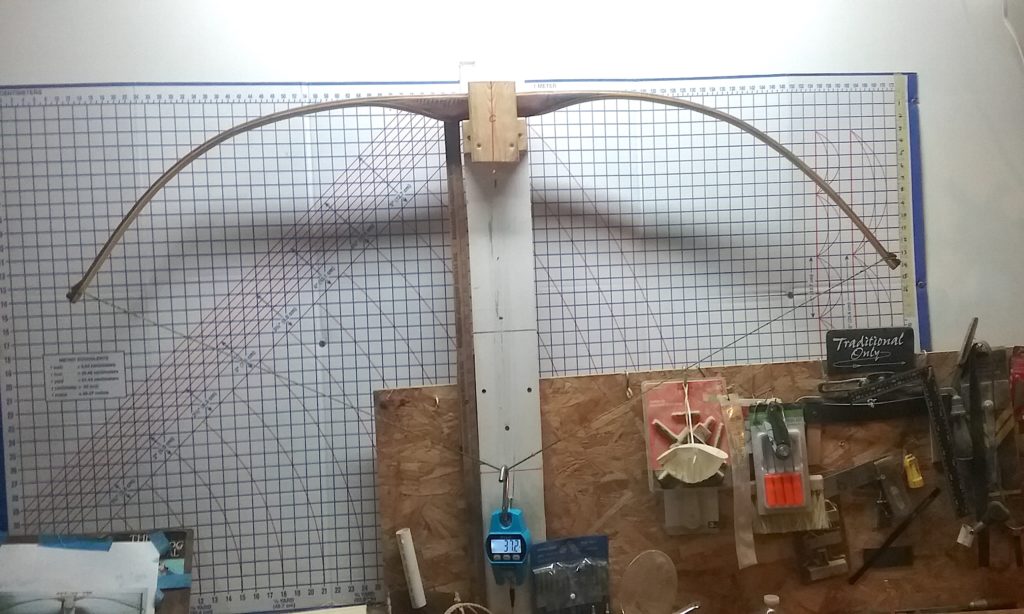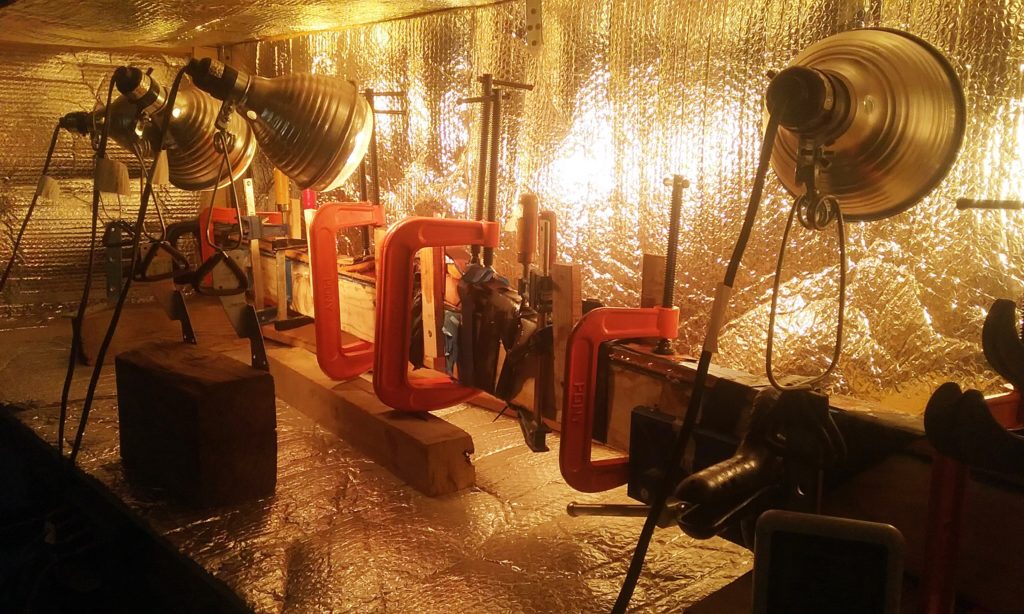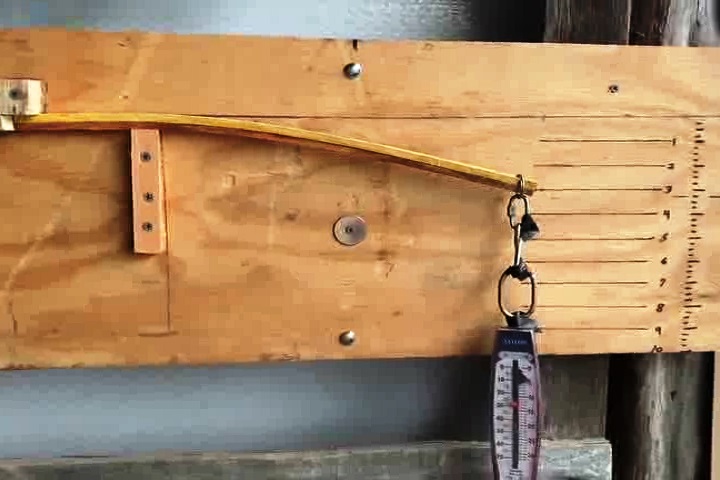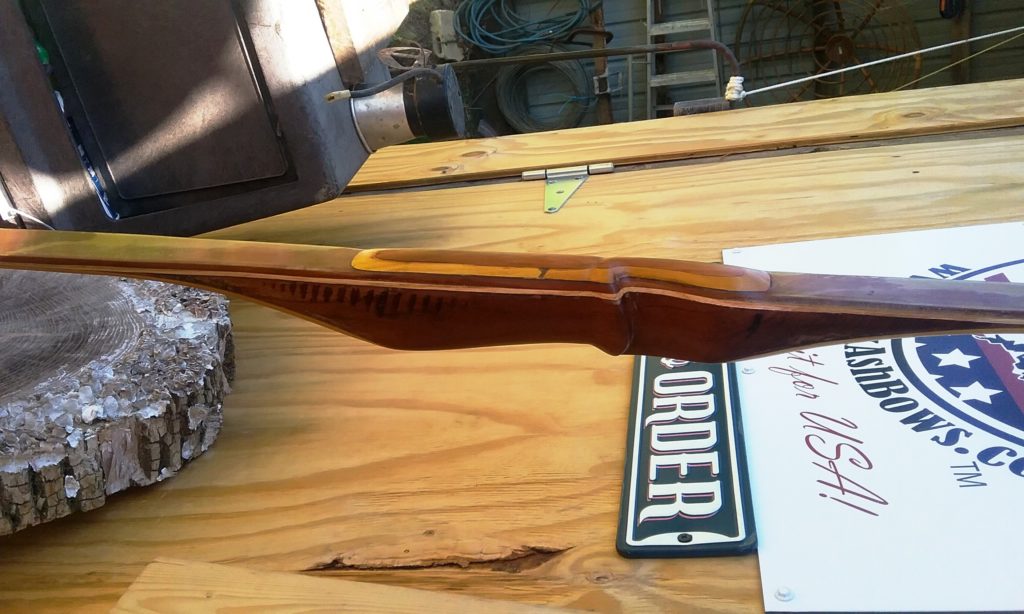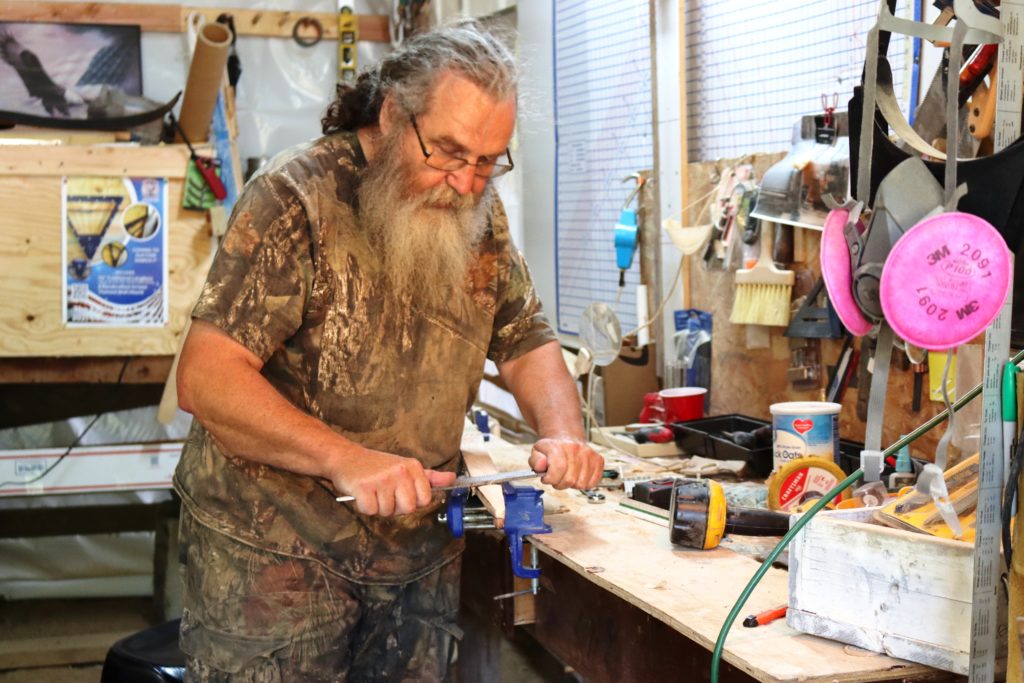When Boo McAfee, founder of Kick Ash Bows, came across some unique wood, something very special had to happen.
As the legend has it, in 1979 Johnny Cash became so concerned about the US placing restrictions on certain exotic woods coming into the country that he had some mahogany cut on his plantation in Jamaica and shipped it via his private plane back to Nashville.
The plantation itself is supposedly haunted and was partially burned and left to rot for many years before its restoration in the 1960s. Mahogany is a strong, beautiful, new-world wood famous for its resonance and resistance to decay.
Since this time, many handsome and wonderful-sounding guitars have been made from this wood for such artists as Ira Dean and Eric Hamilton. However, John Carter Cash (Johnny and June’s only child), being the avid outdoorsman that he is, wondered if his dad’s mahogany might be suitable for making a bow.
Enter legendary Nashville drummer-turned-bowyer Boo McAfee. McAfee has toured and worked in the recording studio with many artists. During his musical days, Boo played drums for John Carter Cash as well, so when McAfee recently started a bow company called Kick Ash Bows in Portland, Tennessee, he became the perfect candidate
to see if Mr Cash’s mahogany might be suitable for bow wood.
McAfee sets the scene. “About 30 years ago, I started hearing about this ‘majestic mahogany’ that Mr Cash had shipped back from Jamaica, so let us fast forward to 2021. John Carter is an amazing songwriter and overall creative talent. How could he not be? I mean, even his grandmother wrote the wonderful hymn Will the Circle be Unbroken?. Then, of course, all of the songs his mom and dad wrote, so yeah, John Carter is a pedigree in that regard. When I received the call to test [the wood] for possibly making a bow, I was extremely excited about the challenge.
“John Carter and I also have several mutual friends that we have all played together at various times, and one of those gentlemen is Jon Vaughn. I built Jon a bow called ‘#9’, in reference to the Beatles song Revolution 9. Jon told John Carter about the bow that I built him and John Carter asked if I could make a bow from his dad’s mahogany. Jon brought me the wood and so that’s where we started.”
Making the call
So, how could a decent bow be made from the majestic mahogany? The plan was to build three test bows using different limb combinations, learning from each one so as to generate enough data to make a call on whether they could produce a decent-shooting and durable bow.
“In building a self-bow from a wooden stave or board, the main thing to keep in mind is you want to remove any part of the stave that doesn’t look like a bow,” McAfee explains. “Usually I have a target bow length, draw weight and draw length to shoot for based on the age, height and overall build of the shooter and their use of the bow. Many times the bow that is frozen in the wood takes on a different path or life of its own. When this happens, you have to just go with it instead of forcing it to be something else.”
He adds: “One of the biggest lessons I have learned is not to keep on chasing the perfect tiller until you take off too much mass and go under your target weight; for example, if you are shooting for a 40# draw weight and you remove so much wood you end up with a 30# bow. You do want both limbs of the bow to bend in an evenly stressed arc of a circle.”
Breakage tests
McAfee started with multiple breakage tests to see how the wood would bend, including Tim Baker’s stress test, a key test from Paul Comstock’s Traditional Bowyer’s Bible (Comstock also had direct input on the project). The first limb combination was a mahogany riser with 1/4in osage for the back and 1/4in ash for the belly, but the osage gave way, most likely due to impurities.
The second combination was a mahogany riser with 1/8in mahogany back, 1/4in osage core and 1/8in ash, and the osage seemed to overpower the ash this time. The third and final combination was .040 clear glass on the back, 1/8in mahogany and 1/8in ash core with ¼in osage belly.
“With the ‘Ring of Fire’ bow, our only parameters were to see if we could make a bow from Mr Cash’s mahogany in the 35 to 40lb weight range,” McAfee says. “So we knew we had to use mahogany and, of course, with our brand being Kick Ash Bows, we wanted to incorporate ash wood. So the challenge was to figure out the best combination. The final poundage ended up with the finished bow being 38lb @ 28.”
Distinct flames
So how did the bow get the name Ring of Fire? McAfee explains: “We were into the project, had selected our first round of limb combinations and were finalising the riser on 25 March when the rough saw blade marks starting morphing into these gorgeous distinct flames. As we continued to sand, the flames became more prominent, like fire coming out of the wood. Kick Ash Bows designer C1N and I even commented that Mr Cash would be pleased with how this wood was turning out.
“At the time, neither of us knew what the significance of the flames appearing on 25 March meant – until I went home that night and pulled up Facebook. There at the top, in bold, it said ‘1963: Johnny Cash records Ring of Fire, 25 March’ – the exact same day the flames popped out in his riser wood. The hair on my arms stood up. No doubt Mr Cash wanted this bow to be called Ring of Fire.
“We settled on the limb combination of from back to belly clear glass, which would feature the mahogany and ash core, and osage orange on the belly. Ring of Fire turned out to be 68in long, 38lb @ 28 and debuted at the 24th annual Tennessee Classic.”
This competition in Chapmansboro has a special place in McAfee’s heart as well for Mark Pappy Baggett and the gang at Twin Oaks Bowhunters, who took the time to work with McAfee early on and inspired him to continue to make bows. Ring of Fire tested well and got good reviews by several shooters at the Classic.
So what’s next for Mr Cash’s majestic mahogany and Kick Ash Bows? McAfee says: “I see three more Cash bows in the future. What about ‘A Bow Named Sue? Bow in Black? Oh, and my favourite: we can sandwich a string of white ash down the centre of the mahogany riser and call it ‘Walk the Line’…”
Kick Ash Bows: a history
McAfee’s heritage goes back to Colonsay, Scotland. His ancestors, the Macfies, were legendary hunters and fighters equally using bows and swords. “Given my family heritage, I guess it was destined I became a Knights Templar with an interest in longbows and how they were used in battle.
“When the shutdown happened due to COVID-19, I decided since I had this awesome piece of ash out at the barn, it was a great time to make that longbow I have always wanted to make. I started out trying to find a bow in a piece of ash wood and literally found myself instead.”
What McAfee calls ‘Kick Ash Wood’ is mainly American white ash, which is different from European ash that was used along with yew in Europe to make longbows. “At the upper echelon of bow woods you have yew and osage. Many think that these are the top two best bow woods.
“Then your white woods: hickory, ash, oak and so on. With the white woods such as ash, I have found we need to go for a broader flat-limb bow with really straight grain and it makes for a really smooth-shooting, forgiving bow with a decent cast. Ash is easy to work, takes heat treating and bending under heat really well. It has been looked down upon and somewhat pushed aside, but we are finding good strong solid ash now in Tennessee.”
Kick Ash Bows is presently a small company capable of producing two bows a week, and it has added one more designer, named C1N, with hopes of doubling production by the end of 2021. “Ash wood has got a bad name the past couple of decades due to the damage done by emerald ash borers.
“Before this pest hit, ash was used for all kinds of items, including toboggans, hockey sticks, canoe paddles, tool handles, hardwood floors, electric guitars and baseball bats. Ash wood is, in fact, the source of myth and legend around the world.”
“It is all a part of our overall mission to reinstate the good name and reputation that ash wood once held. We want the world to know that ash is not a four-letter word!” says McAfee.


